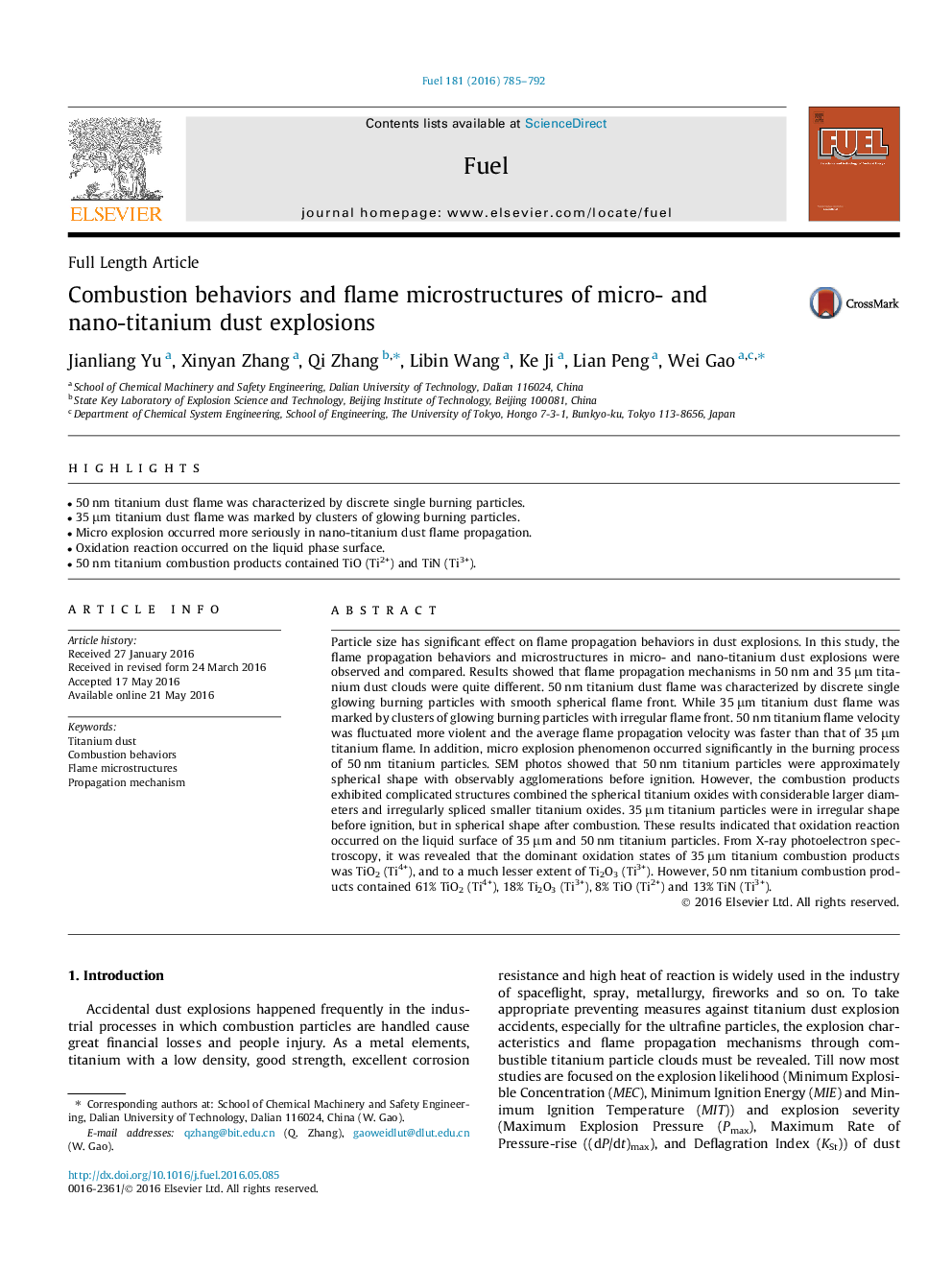| کد مقاله | کد نشریه | سال انتشار | مقاله انگلیسی | نسخه تمام متن |
|---|---|---|---|---|
| 204965 | 461093 | 2016 | 8 صفحه PDF | دانلود رایگان |
• 50 nm titanium dust flame was characterized by discrete single burning particles.
• 35 μm titanium dust flame was marked by clusters of glowing burning particles.
• Micro explosion occurred more seriously in nano-titanium dust flame propagation.
• Oxidation reaction occurred on the liquid phase surface.
• 50 nm titanium combustion products contained TiO (Ti2+) and TiN (Ti3+).
Particle size has significant effect on flame propagation behaviors in dust explosions. In this study, the flame propagation behaviors and microstructures in micro- and nano-titanium dust explosions were observed and compared. Results showed that flame propagation mechanisms in 50 nm and 35 μm titanium dust clouds were quite different. 50 nm titanium dust flame was characterized by discrete single glowing burning particles with smooth spherical flame front. While 35 μm titanium dust flame was marked by clusters of glowing burning particles with irregular flame front. 50 nm titanium flame velocity was fluctuated more violent and the average flame propagation velocity was faster than that of 35 μm titanium flame. In addition, micro explosion phenomenon occurred significantly in the burning process of 50 nm titanium particles. SEM photos showed that 50 nm titanium particles were approximately spherical shape with observably agglomerations before ignition. However, the combustion products exhibited complicated structures combined the spherical titanium oxides with considerable larger diameters and irregularly spliced smaller titanium oxides. 35 μm titanium particles were in irregular shape before ignition, but in spherical shape after combustion. These results indicated that oxidation reaction occurred on the liquid surface of 35 μm and 50 nm titanium particles. From X-ray photoelectron spectroscopy, it was revealed that the dominant oxidation states of 35 μm titanium combustion products was TiO2 (Ti4+), and to a much lesser extent of Ti2O3 (Ti3+). However, 50 nm titanium combustion products contained 61% TiO2 (Ti4+), 18% Ti2O3 (Ti3+), 8% TiO (Ti2+) and 13% TiN (Ti3+).
Journal: Fuel - Volume 181, 1 October 2016, Pages 785–792
